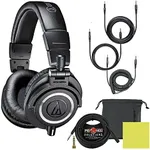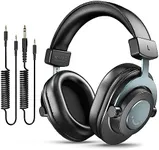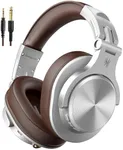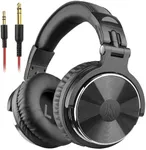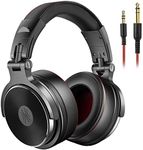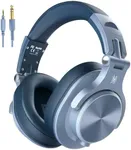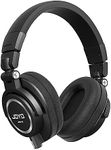Buying Guide for the Best Headphones For Recording
When choosing headphones for recording, it's important to focus on features that will ensure accurate sound reproduction, comfort for long sessions, and durability. The right pair of headphones can make a significant difference in the quality of your recordings and your overall experience. Here are some key specifications to consider when selecting headphones for recording.Frequency ResponseFrequency response refers to the range of frequencies that headphones can reproduce, typically measured in Hertz (Hz). This spec is important because it determines how accurately the headphones can reproduce the sounds you are recording. A wider frequency response range (e.g., 20 Hz to 20,000 Hz) is generally better, as it can capture both the low and high ends of the audio spectrum. For recording purposes, look for headphones with a flat frequency response, which means they reproduce sound without boosting or cutting any frequencies, ensuring you hear the audio as it truly is.
ImpedanceImpedance is the resistance of the headphones to the electrical signal from your audio source, measured in ohms (Ω). This spec is important because it affects the volume and clarity of the sound. Low impedance headphones (under 50 ohms) are suitable for use with portable devices like smartphones and laptops, while high impedance headphones (over 50 ohms) are better suited for professional studio equipment that can provide the necessary power. For recording, if you are using professional audio interfaces or amplifiers, high impedance headphones are recommended for better sound quality.
Driver SizeDriver size refers to the diameter of the speaker inside the headphones, measured in millimeters (mm). This spec is important because larger drivers can produce more powerful and clearer sound, especially in the lower frequencies. Common driver sizes range from 20mm to 50mm. For recording, headphones with larger drivers (40mm and above) are generally preferred as they provide better bass response and overall sound clarity.
Closed-Back vs. Open-BackClosed-back headphones have a sealed design that prevents sound from leaking out and external noise from getting in. This spec is important for recording because it allows you to focus on the audio without distractions and prevents the microphone from picking up headphone bleed. Open-back headphones, on the other hand, have a perforated design that allows air and sound to pass through, providing a more natural and spacious sound. For recording, closed-back headphones are usually the better choice to ensure isolation and accurate monitoring.
Comfort and Build QualityComfort and build quality refer to how the headphones feel when worn and how well they are constructed. This spec is important because recording sessions can be long, and you need headphones that are comfortable to wear for extended periods. Look for headphones with adjustable headbands, cushioned ear pads, and lightweight designs. Additionally, durable materials and solid construction are essential to ensure the headphones can withstand regular use. For recording, prioritize comfort and build quality to ensure a pleasant and reliable experience.
Cable Type and LengthCable type and length refer to the design and length of the headphone cable. This spec is important because it affects your mobility and convenience during recording sessions. Coiled cables can stretch and provide flexibility, while straight cables are less prone to tangling. The length of the cable should be long enough to allow you to move around comfortably without being restrictive. For recording, choose a cable type and length that suits your setup and workflow, ensuring you have enough freedom to move without compromising sound quality.





